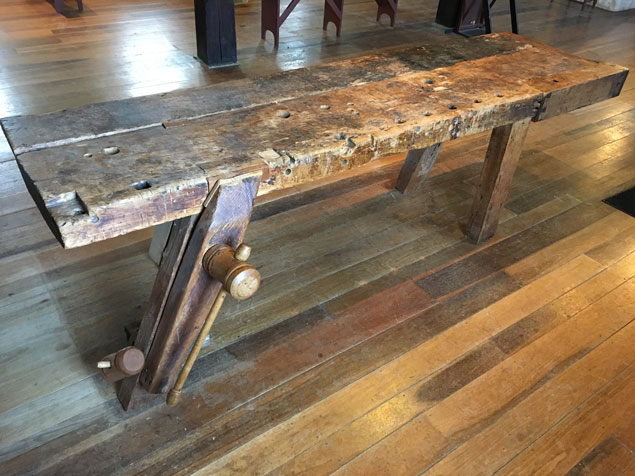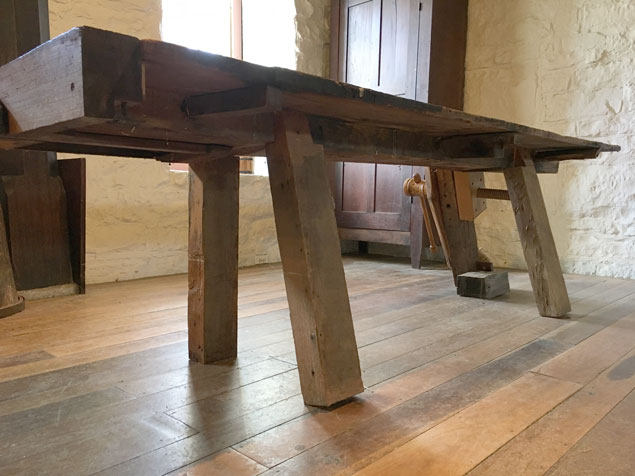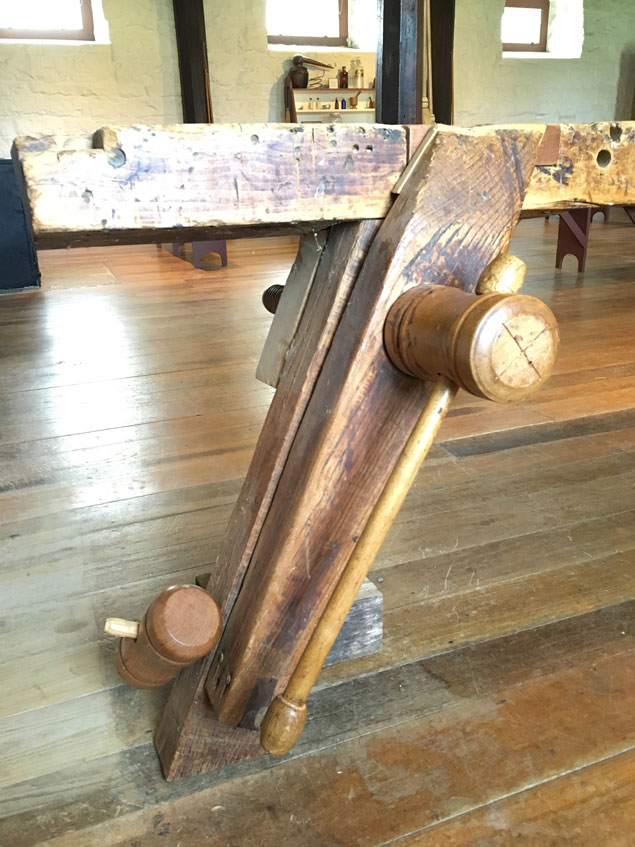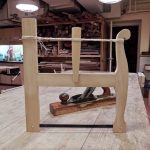We may receive a commission when you use our affiliate links. However, this does not impact our recommendations.
The first workbench I encountered at Pleasant Hill was a little non-standard by Shaker standards, but the second workbench was unusual by most any measuring stick for modern workbenches.
It is a bit Roman, a bit English and has a lot of other interesting details worth thinking about. Let’s take a look at some of them.
Why is it Romanesque? The earliest workbenches typically lacked stretchers between the legs. This was a common feature on very early benches all the way up to the bench in the Stent panel. By the 18th century, most workbenches had stretchers between the legs, if only to capture a shelf for tools.
This bench has evidence that at some point someone nailed on one or two stretchers, but I was glad to see they had been removed.
Like a typical Roman bench, the legs are mortised into the top, which is a fairly narrow and thick plank. The back legs kick out at an angle, which is a feature seen on many English workbenches (and benches found on some sailing ships, such as the Vasa).
What is a bit unusual about this bench is that there is a thin shelf at the rear of the benchtop that is supported by bearers, which are mortised into the top and which I suspect are original.
This arrangement is a bit English – it’s a way to use thick wood in only the places where it is absolutely needed.
The vises on the bench are typical of a fairly sophisticated 19th-century workbench – a screw-driven tail vise and leg vise. The leg vise is angled, something you see on American and some English workbenches. The mechanism that drives the leg vise is all kinds of newish and wrong. I’d ignore the mallet-like thing driven through the leg for now.
I found this bench quite charming and sturdy (I gave it a careful nudge while the docents weren’t looking). But most of all it is an example of how workbenches don’t evolve in a linear fashion. This bench could have been made at any point between 1500 and 1900.
— Christopher Schwarz
Like workbench talk? Check out the new fully revised edition of “Workbenches: From Design & Theory to Construction & Use.”
Here are some supplies and tools we find essential in our everyday work around the shop. We may receive a commission from sales referred by our links; however, we have carefully selected these products for their usefulness and quality.













Interesting. I can see the benefit of the shelf in keeping surface area while reducing weight. I guess it’s a natural no-pound, no grunt zone. I would think a challenge would be keeping a thinner, unjoined board coplaner with the plank, and keeping it from twisting?
After noticing the front leg with the leg vice kicked towards the left side of the bench, it dawned on me for the first time why one would ever kick out a leg at all. Obviously–but not so much to me till now–it’s to transfer load to the ground more efficiently, making the bench that much more stable. 97% of the time one is planing the load is going that-a-direction, for example. (I know, duh!) Now I know why the back legs would kick out towards the back. It’s to compensate for a narrow top, and to stabilize the bench. If one is not going to put a narrow bench against a wall, this would be a good solution I would think.